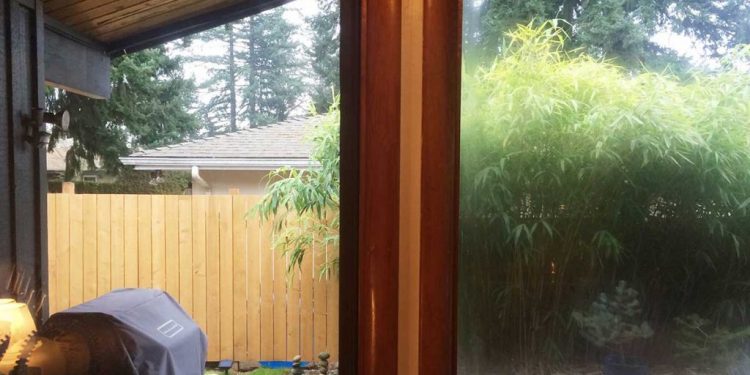Condensation inside windows can be a serious cause of concern for homeowners. Perhaps you’ve asked your neighbors or friends and they don’t seem to have the same issue. So why does it seem to be a problem in your home?
Is it really serious? Does this mean I need to spend a lot of money replacing my windows? These might be some of the questions passing through your mind.
In this article, we will clear up the fog of confusion and misunderstandings about condensation inside windows. Once you understand a little bit of the science and realize what this means in practical terms, you will see what you can do to make a difference and how to spot genuine causes for concern.
Condensation 101
It’s helpful to understand how condensation forms naturally. Perhaps a good example is a glass containing a cold drink on a hot day. The outer surface of the glass will accumulate moisture; this is condensation.
In this case, condensation occurs when there is a temperature difference between the two mediums, that is the air and glass. Warm air containing moisture, when it hits the cold outer surface of the glass, it causes the air to cool and condensate in the process.
The key factor to keep in mind as you continue to read through this article is that condensation occurs when there is a temperature difference affecting the ambient air.
Small Gap — Big Gains
In double glazed windows, it’s the small gap between the windows that’s the key to insulation. This gap is usually filled with a gas and acts as an insulating barrier between the outside window pane and the inside window pane. This allows for both panes to develop different surface temperatures without affecting each other.
The inside window pane will develop a surface temperature that’s the same as the ambient temperature in your room. So when your double glazed windows are functioning, there should be no condensation forming on the glass. Remember though, condensation is all about temperature differences so you will see in the next section how that’s possible even though your double glazed windows are working fine.
Condensation Contributors
Now you know what the variables are that contribute to window condensation, you may be able to think about possible triggers for increasing the moisture in the air or increasing the temperature of the air itself.

Airing Your Washing Indoors
As you do this, moisture that’s in your clothing will eventually evaporate and be absorbed in the ambient air. As that air circulates around your house it will at some point come into contact with the cooler glass of your windows, at which point it will condensate.
This partly because there will always be a lag between the temperature of your glass and the ambient temperature in your room. Bottom line is that you may unintentionally be creating condensation on your windows by doing this.
Vapor From the Bathroom
You may not realize it, but steam containing moisture from your hot shower or bath will circulate around your house long after your shower is finished. This ‘hot air’ containing moisture will come into contact with the cooler surface of your windows and will condensate. A helpful fix is to make sure your bathroom is well ventilated by opening a window, or by using a moisture remover.
Thirsty Plants
As strange as it may sound, your plants are a sort of moisture vapouriser. As your plants take in carbon dioxide, they draw water up from their roots and to their leaves where there are tiny open pores. When the water reaches these pores, it evaporates and is absorbed in the surrounding air.
That means that if you have a lot of plants, and especially if you water them often, then they may be the source of extra moisture and condensation on your windows. Many plants like to be by the light and are located near the windows which exacerbate the situation even more.
Diagnosing Serious Problems
There are practical things you can do to reduce the moisture in your house such as using fans, opening windows, and helping to create airflow through the house. Air conditioning systems also help, as they draw moisture from the air as a by-product of the conditioning process. You can also use a dehumidifier to help reduce the moisture in the atmosphere.
If you already have these measures in place and you’re still getting excessive condensation on your windows then you may have a problem. Certainly, if you see condensation between window panes, within the gap of the double glazed windows, it would suggest that the gap is no longer sealed and insulated.
The extent to which this will cause you a problem depends on lots of things such as where you live and the local weather etc. Still, it’s worth noting that moisture can run down the windows and affect the walls and other parts of the house causing moisture damage.
Not only that, but your house will also lose some of the heat efficiency that was intended by fitting the double glazed windows; that means higher energy bills. If you spot anything like this, then it’s best to get a professional for window replacement services to come and assess what your options are.
No More Condensation Inside Windows
In this article, you’ve read about condensation inside windows, where the problem originates from, and what can be done practically to minimize it. That said, not all problems can be fixed by yourself.
Sometimes, you have to call in professionals especially if you can see that the normally sealed insulating gap of the windows has been compromised. Check out our latest articles on creating a better home on our website.






